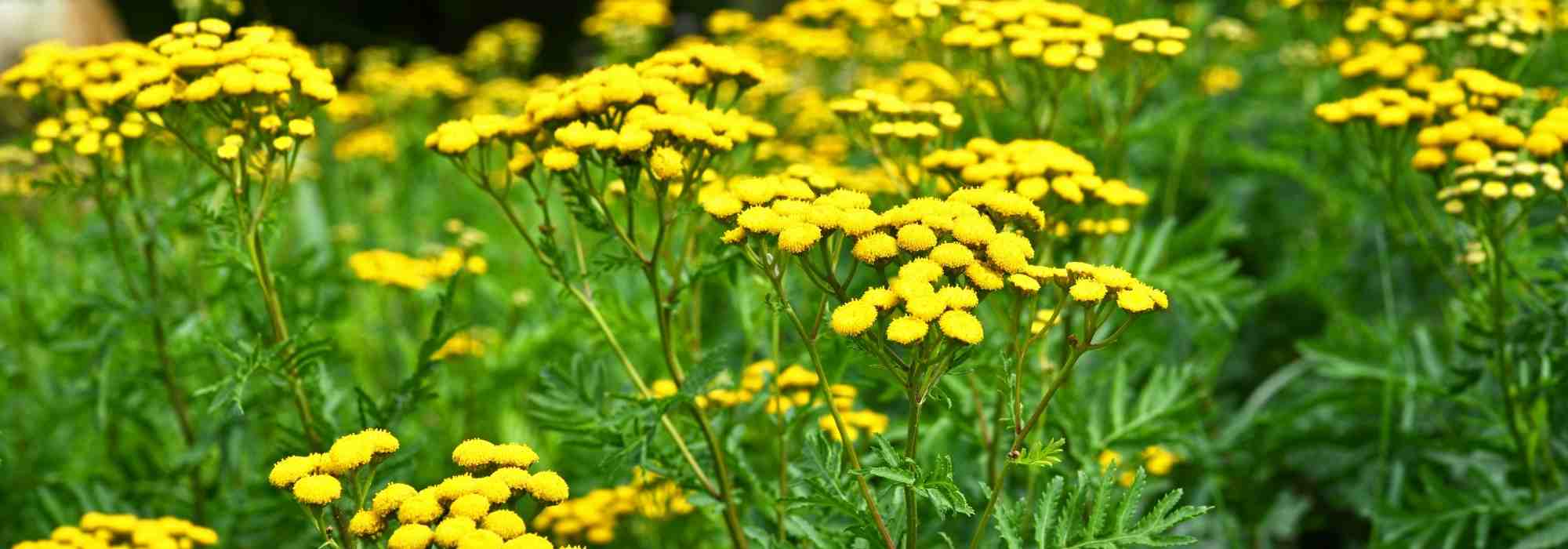
How to make tansy manure?
An effective repellent, easy to prepare and use: our advice
Contents
Tansy is a perennial plant that forms an herbaceous clump with finely divided foliage, within which pretty yellow flowers bloom, arranged in a corymb like a flattened cluster: tansy is a garden essential! Anyone wanting to maintain an organic vegetable garden is usually interested in this plant, which is full of virtues. Particularly effective for making 100% natural manure, it can also be used to keep harmful insects away from your plantings. As if that were not enough, note that this hardy and robust plant tolerates cold (down to -15°C) and drought very well, so it can be grown in all regions, whatever the climate.
Discover our tips to easily make green extracts from tansy!
Properties of tansy
First of all, you can of course grow tansy for its decorative value. For example, Golden Tansy (Tanacetum vulgare ‘Isla Gold’) is a very attractive variety, characterised by magnificent golden foliage from spring through autumn.
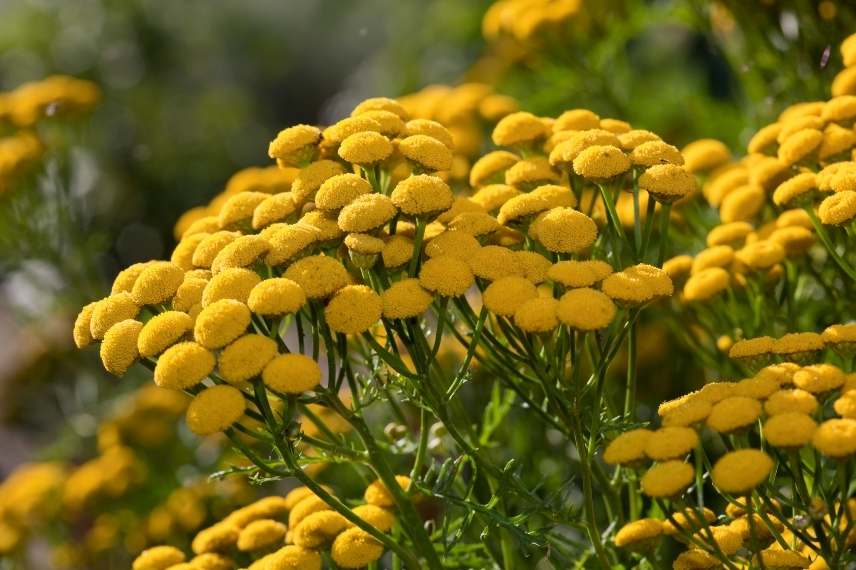
More generally, it is above all tansy’s properties in the garden that encourage gardeners to grow it frequently. To start with, tansy’s strong aromatic scent helps to repel insects, without killing them. You can use it as a repellent that does not disturb ecosystem balance! While it is useful to keep wasps, flies and other aphids away from your vegetable patch, you should also avoid exterminating them if you care about preserving biodiversity. Insects most commonly repelled by this plant include ants, aphids, butterflies and mites, among others.
Surprisingly, some scientific studies have shown that tansy can inhibit egg-laying and larval feeding. In other words, it not only prevents species from approaching the vegetable patch, it also slows establishment of pests around your young plants (Colorado potato beetles, codling moths, cabbage whites and cabbage aphids).
Tansy’s fungicidal properties could also help gardeners who wish to avoid using too many chemical products. It can be used as a raw material to combat rust and potato late blight, in particular.
Read also
Comfrey manure: recipe, use and benefitsTansy in the garden: how to grow it?
Although it is robust and long‑lived, tansy will do even better if you plant it in full sun or partial shade. Also make sure to keep it sheltered from wind: stems are rather thin and may break in a storm or in particularly unsettled weather.
In general, tansy thrives in all drained soils, even strongly calcareous or dry soils. However, soils waterlogged for long periods are detrimental to development of this plant, which can also weaken through excessive acidity.
You can perfectly grow your tansy in a pot to control its growth. Otherwise, select location carefully, knowing it will spread fairly easily via its rootstocks. Keep this in mind when planting so as not to place tansy too close to other plants. Space plants 50 cm apart in all directions.
Tansy is planted between March and June in spring. If you missed this period, you can also aim for autumn, between September and October.
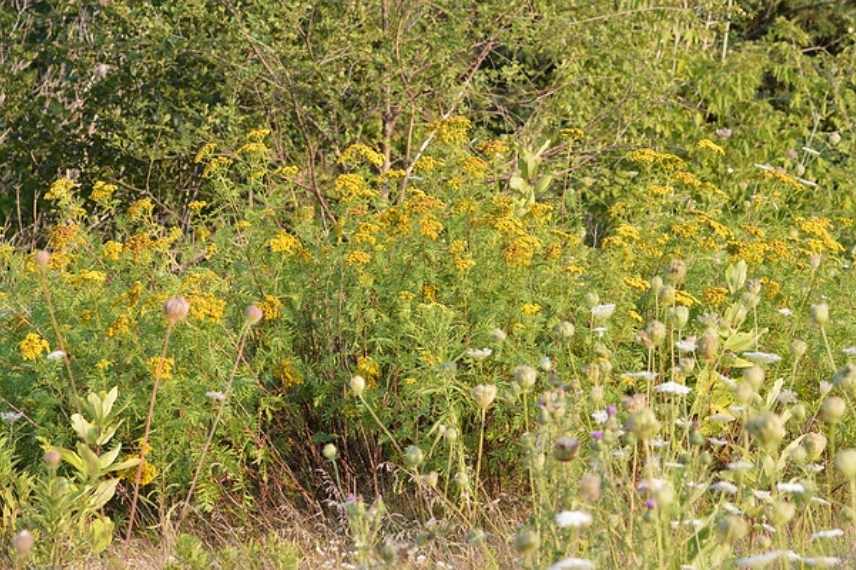
Tansy favours dry, well‑drained soil (Photo: R. Hodnett)
For planting, start by digging a hole 3 to 4 times larger than the rootball, be sure to loosen the soil well and add a thin layer of gravel to the bottom of the hole. After inserting the rootball, simply cover with fine soil, firm down and water.
Finally, you can harvest your tansy before flowering by cutting leafy stems. If you want to use fresh or dried tansy, store it in airtight jars… Many incorporate it into salads, omelettes and other desserts for original, flavoursome recipes!
But to fully benefit from all virtues of tansy, don’t forget to use it as manure in the garden…
Tansy manure: preparation
To use a tansy extract, remember this dosage, which you can adapt according to quantities available: 1 kg of raw material per 10 litres of water.
To make your tansy manure :
- place fresh tansy, chopped beforehand, in non-metallic container
- Add rainwater
- Leave to ferment in sun for a few days
- Stir mixture daily
- Then, when small bubbles (foam) that were forming begin to disappear, strain everything through a stamen and dilute to 10% or 20%
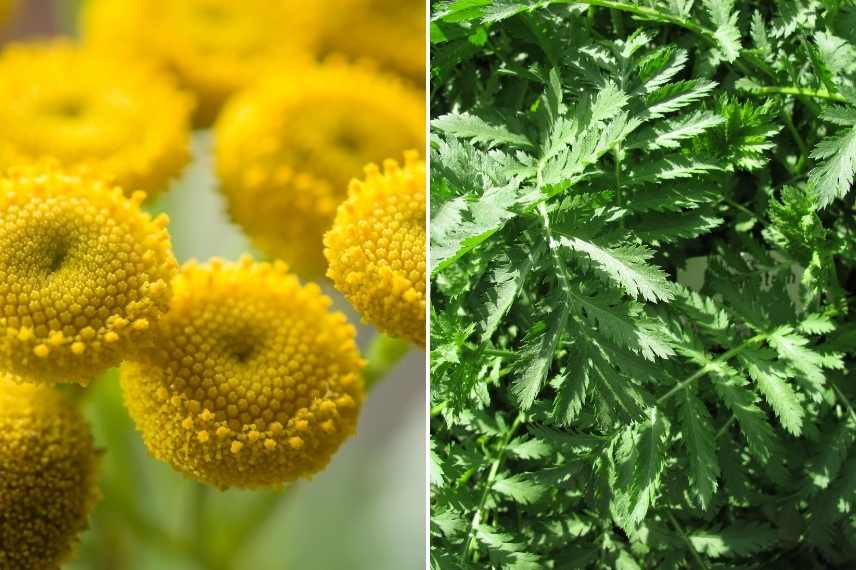
These are the flowers and leaves of tansy that will be used to make your manure
Natural gardening: using tansy manure
Once your tansy manure diluted to 10 or 20% is ready, place it in a sprayer and spray over all aerial parts of your plants, including undersides of leaves. This will help protect them from various parasitic pests against which tansy is effective, while reducing risk of all sorts of fungal diseases. Undiluted, this extract can also be used against cabbage fly.
To ensure good effectiveness, regular use of tansy manure is recommended. Ideally, spraying should be done in the evening, at sunset. Indeed, it is important to know that under UV rays, active compounds of this natural mixture tend to degrade.
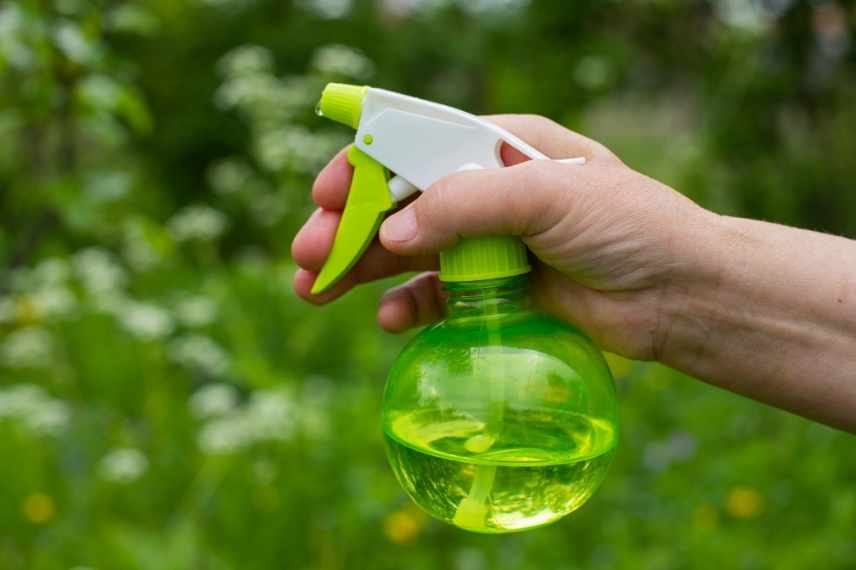
Use a sprayer for uniform and effective application of tansy manure
A versatile preparation: the many benefits of tansy
Tansy decoction
There are other tansy-based preparations for the garden. A plant decoction involves:
- pour 30 grams of plants (leaves and flowers) into 1 litre of water (rainwater)
- leave to macerate for one day
- the preparation should then be brought to the boil, before being left to simmer for about 40 minutes
- the mixture rests for 30 days, before being filtered and used within the following 30 days, taking care to keep it cool and protected from light
This use concerns rather the tougher parts of plants such as roots and bark, and is actually akin to an infusion.
Tansy maceration
Finally, some people also make a maceration of tansy flowers to dry them:
- after chopping flowers and diluting them in water, leave them in the sun to extract active compounds
- then the mixture is used undiluted to prevent the appearance of rust and mildew
As you can see, because of its many properties and its ease to grow, tansy is a plant you would be wrong to do without in the garden, allowing you to abandon chemical products with ease.
- Subscribe!
- Contents































Comments